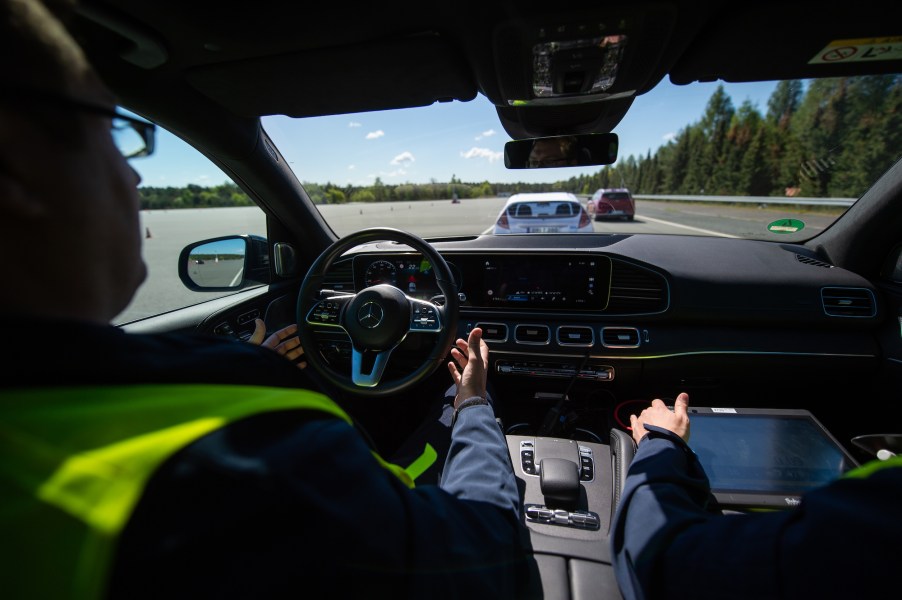
How Automatic Emergency Braking ‘Sees, Thinks, and Reacts’
Newer vehicles have all sorts of interesting safety features to make driving on the road safe. Forward collision warning, lane departure warning, and lane-keeping assist have all helped to reduce accidents for many cars. One safety feature we can’t live without is Automatic Emergency Braking. What is it, and how does it work?
Automatic Emergency Braking is one of the best safety features you can get

While having a fully self-driving vehicle is a dream for many people, safety features are so impressive now that it makes us think that dream isn’t so far off. One of those features is Automatic Emergency Braking (AEB), which allows the car to take over the braking when it detects an imminent collision.
Some manufacturers offer it in a collection of other safety features on the vehicle, while others have it as an optional feature you can add for a fee. According to Erie Insurance, it’s not required as a standard item on the cars produced nowadays, but it’s strongly recommended by the IIHS and the NHTSA. It’s also reportedly going to be mandatory by the year 2025.
If you don’t want the AEB feature turned on for some reason, it can be disabled through the vehicle’s settings. However, for your safety you might want to consider keeping it enabled as it can significantly increase your chances of surviving a crash relatively unscathed.
How does Automatic Emergency Braking work in your vehicle?
There are a few different types of automatic emergency braking features, and each works differently. In most cases, manufacturers will have an AEB system that works when driving full-speed down the road. Sensors or cameras will scan a large area ahead of you, and if it detects an object, it will slow the car down.
The system will then begin to compute the likelihood of a potential accident by analyzing the data it receives from the sensors or the cameras. It basically “thinks” of the probability of whether a collision could happen or not. It will continue to observe the situation, and if something happens and it detects an imminent crash, it will respond to the event for you.
The reaction phase is where it overrides your input, and it will apply the brakes to slow down enough to avoid a crash. So, as Erie Insurance puts it, it “sees” the situation in front of you with the sensors, “thinks” whether it needs to take action with the software, and “reacts” by braking the car to keep from having a collision with another object.
Some of these will come with pedestrian detection, which will detect pedestrians or cyclists and respond accordingly. Some vehicles come with a low-speed AEB system. This feature works the same as the full-speed, except it will only work when driving at lower speeds, like in city traffic or the parking lot.
How beneficial will it be?
An IIHS study showed there was a 50% reduction in rear-ended crashes with vehicles that had an Automatic Emergency Braking feature. As for injuries due to these crashes, it was shown that there was a 56% reduction in trauma that otherwise would’ve occurred without the AEB.
The most impressive part of this feature is that it reacts quicker than you could when a potential collision is imminent. It’s constantly analyzing the area in front of you to determine whether a crash could happen. You may not know one is coming until it’s too late. The AEB can slow down your vehicle drastically, so if a collision does occur, you won’t hit near as hard as you could’ve.
Unfortunately, there are a few drawbacks to this feature. First, it will cost significantly more to have it on your vehicle. Many companies are offering it as standard, but the costs of the car will be much higher. Also, the AEB can be activated even when there isn’t any danger.
Having the Automatic Emergency Braking system on your vehicle will drastically reduce your chances of a crash and lessen the force of a collision should one still occur. This lifesaving feature is one step closer to the fully self-driving car we hope to see on the road soon.


